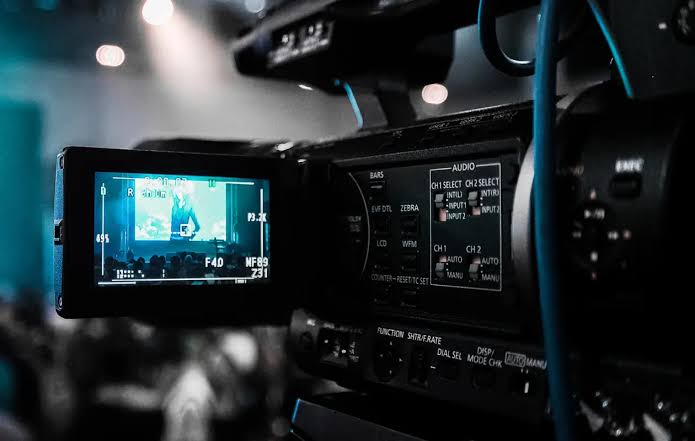The Future of Videography: Trends, Tools, and Techniques to Watch
Explore the future of videography with insights into emerging trends, innovative tools, and cutting-edge techniques. Discover how high-definition resolutions, VR/AR integration, AI advancements, and live streaming are shaping the industry, and learn how to stay ahead with the latest tools and techniques for creating impactful and engaging video content.
Videography | August 31, 2024
Explore the future of videography with insights into emerging trends, innovative tools, and cutting-edge techniques. Discover how high-definition resolutions, VR/AR integration, AI advancements, and live streaming are shaping the industry, and learn how to stay ahead with the latest tools and techniques for creating impactful and engaging video content.
The Future of Videography Trends, Tools and Techniques to Watch Out For Videography, A field is progressing at a pace driven by advancements and changing viewer preferences. Looking ahead there are trends, tools and techniques that are shaping the landscape of videography offering exciting opportunities for both professionals and enthusiasts. One notable trend in videography is the growing popularity of definition and 4K resolution. With technology becoming more accessible and affordable 4K video is establishing itself as the standard. This enhanced resolution brings improved clarity and detail, enriching the overall viewer experience. Additionally the emergence of 8K resolution, still in its stages, holds promise for visuals pushing the boundaries of video quality even further.
Another trend worth noting is the incorporation of reality (VR) and augmented reality (AR) into the world of videography. These technologies offer experiences that enable audiences to interact with content in ways. For example VR allows users to immerse themselves in events or settings as if they were physically there while AR adds elements to the real world, enhancing storytelling and engagement. As these technologies gain popularity they are expected to pave the way, for creative exploration and audience involvement.
Moreover the rise of intelligence (AI) is significantly influencing videography. AI driven tools are revolutionizing facets of video production, including editing and content analysis. For instance AI can streamline tasks like organizing and labeling footage making the editing process more efficient. Additionally AI algorithms can improve quality by reducing noise and enhancing resolution. Machine learning is also utilized to understand viewer preferences and forecast trends enabling creators to customize their content, effectively.
Drones have transformed the field of videography offering filmmakers perspectives and stunning shots that were once challenging or impossible to capture. The latest drone models come equipped with stability extended flight durations and high resolution cameras broadening the scope for creativity. With advancements in technology we can anticipate features such, as improved obstacle avoidance and automated flight patterns that will further enhance the quality of aerial footage.
On the hand the rise of streaming has emerged as a trend in videography. It enables creators to stream events, performances and other content live fostering interaction with audiences. Platforms like YouTube, Facebook and Twitch have made streaming more accessible. Advances in streaming technology, such as bitrates and reduced latency are enhancing the quality and dependability of live broadcasts. As streaming gains traction it is poised to play a role in video content strategies for both businesses and individuals.
When it comes to tools in the realm of video editing software has made progress. Modern editing platforms come equipped with an array of features such as color grading, motion graphics and 3D effects. Programs like Adobe Premiere Pro, Final Cut Pro and DaVinci Resolve lead the pack by offering editors the tools to elevate their projects. Moreover cloud based editing solutions are gaining popularity enabling collaborations and remote project access, which is particularly valuable in todays work landscape.
Another noteworthy trend is the rise of videography. With the widespread availability of high quality smartphone cameras more content creators are now producing and sharing videos directly from their phones. This shift has democratized videography making it easier for people to capture and share on the go. Mobile video editing applications are also evolving becoming sophisticated and offering features that were once exclusive to desktop software. This accessibility fosters creativity and spontaneity, in video production.
Social media platforms continue to play a role, in how video content is shared and consumed. Platforms like Instagram, TikTok and Snapchat have made videos popular highlighting the importance of content. Creators need to adjust their approaches to fit the formats and algorithms of these platforms which often prioritize user interaction and algorithmic suggestions.
When it comes to techniques storytelling is key in creating videos. While technology advances the basics of storytelling—like structure, character development and emotional impact—are still crucial. However new methods such as adding elements or using virtual reality to craft experiences are bringing dimensions, to storytelling.
Looking ahead the role of videography is set to grow driven by advancements in technology and changing viewer tastes. To stay ahead in this evolving landscape videographers need to keep up with trends, tools and techniques. By adapting to these changes and experimenting with new methods videographers can consistently produce content that captivates and connects with audiences, in our digital age.
